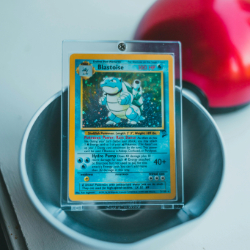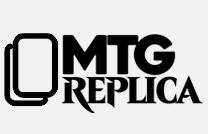
MTGreplica helps players decide if MTG fake cards are the right option for budget-friendly, casual play.
The Rising Cost of Magic: The Gathering
Magic: The Gathering has grown from a fun local card game to a global strategy hobby with millions of fans. With this popularity, however, came a surge in card prices. Many staples, from competitive formats to Commander favorites, can now cost hundreds of dollars each. This leaves many fans, especially newcomers, questioning whether they can afford to participate in the game they love.
That financial barrier has led players to explore alternatives. Among the most talked about are mtg fake cards offered by brands like MTGreplica. These replicas allow players to enjoy building decks without having to sacrifice an entire paycheck just to keep up with the meta. But is it worth using them? Let’s explore.
What Makes MTG Fake Cards Appealing?
For many casual players, fake cards fulfill a need that’s less about collection and more about gameplay. Why pay hundreds for a single card when you just want to test a strategy with friends? This is the primary reason many players turn to MTGreplica—to experience the game in a fuller way without the financial burden.
The appeal lies in both affordability and variety. With replicas, players can try multiple archetypes, experiment with entire deck builds, or replace cards that would otherwise be out of reach. For casual play, this opens the door to creativity and fun. And unlike tournament spaces where authenticity is tightly enforced, kitchen-table nights, EDH groups, and friendly leagues often encourage cards that keep the game exciting rather than exclusive.
The Ethics of Playing with Replicas
Of course, discussions around fake or replica Magic cards can’t avoid ethics. Collectors argue that authentic cards hold market value that replicas could undermine if used dishonestly. This concern is valid if someone attempts to pass off a fake as the real thing, especially in secondary markets.
However, the role of MTGreplica is different. By making its cards transparent as replicas, the brand aims at the portion of the community that just loves playing the game. When everyone at the table knows they’re using proxies or alternatives, fairness remains intact. The issue emerges when deception enters the picture—something responsible players can prevent by setting boundaries and being honest with their playgroup.
Players need to understand the line: replicas should be enjoyed for fun and testing, not for fraudulent resale. By respecting this principle, both collectors and casual players can coexist without tension.
Casual Play vs. Competitive Events
Another important factor in deciding whether MTG fake cards are worth considering is the setting you play in. At a kitchen table surrounded by friends, alternatives are generally welcomed. In fact, many groups openly encourage proxies so players don’t feel forced to overspend to join a match.
On the flip side, sanctioned tournaments run by Wizards of the Coast or official stores strictly prohibit replicas. Authenticity here is non-negotiable, as it preserves the integrity of competitive Magic. This distinction highlights why context matters. Casual play celebrates inclusivity and fun, whereas competitive play values strict enforcement and collectible integrity.
In spaces where competition isn’t the main goal, MTGreplica products give players options they wouldn’t otherwise have. This ensures everyone, regardless of budget, can still fully immerse themselves in creative deck-building and gameplay.
Final Thoughts
Choosing whether to use replicas ultimately comes down to the player’s context. With clear understanding, honesty, and mutual respect, MTGreplica offerings can give players new ways to love the game while easing the burden of high costs.
For the casual player, mtg fake cards are not about cheating or devaluing the community—they are about keeping Magic alive and fun, no matter your financial situation. And in today’s environment, that accessibility might just be the most valuable part of all.
